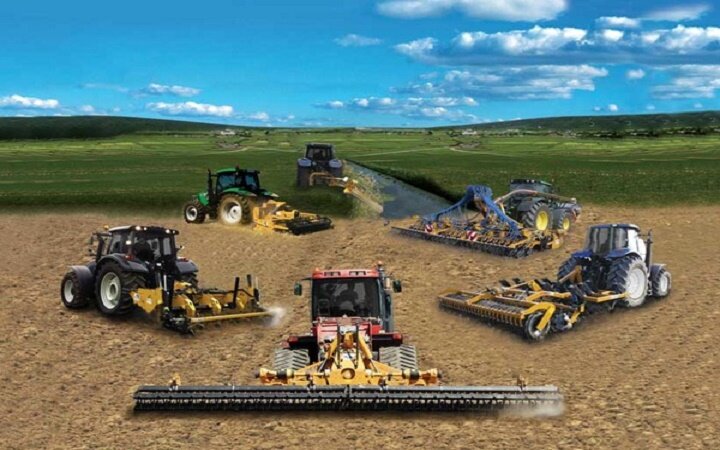Unprecedented leap in agricultural mechanization development indicators

As the world's population grows, the importance of agriculture and meeting human needs through agriculture is increasing day by day.
Today, traditional methods no longer meet this need. To succeed in this way, we must use modern agricultural methods in the country.
At present, the general movement of countries towards development and progress and achieving independence is directly related to agricultural production, and on the other hand, raising the quantity and quality of production is not possible without mechanization of agriculture.
The agricultural sector, due to its significant share in GDP and export revenues, has a key role in determining the direction and general position of the economic development process, especially in third world countries.
Thus, the prosperity of the agricultural sector with regard to its role in food security and job creation has a high importance and priority in economic, social and cultural development programs.
The production of agricultural products is the result of the interaction of three important factors: water, soil and machinery, and the role of the human factor is in the field of thinking, planning and production management, and agricultural mechanization can be considered as a system that with proper management can create fundamental changes in the agriculture sector of a country.
Another advantage of mechanization is the creation of desire and attractiveness to do agricultural work, which is done by reducing the difficulty of work.
All the above-mentioned factors prove the significance of mechanization in the agriculture sector.
In Iran, some unprecedented leap has been witnessed in terms of agricultural mechanization development indicators over the past decade.
Head of Iran’s Agricultural Mechanization Development Center Kambiz Abbasi has recently said that through investing over 200 trillion rials (about $4.76 billion) in the field of agricultural mechanization, the country has experienced a historical leap in this due over the past ten years.
This has led to quantitative and qualitative development, improvement of mechanization indicators, as well as prosperity of activities in the manufacturing of agricultural machinery, he noted.
The official has also announced that up to 95 percent of agricultural machinery in Iran is manufactured domestically.
According to Abbasi, the country’s agricultural production has increased by 350 percent due to the implementation of the Agriculture Ministry’s mechanization programs.
He has noted that Iran’s domestic industry of agricultural machinery has experienced a boom during the past 10 years thanks to the Comprehensive Agricultural Mechanization Plan ratified by the government for which so far over 200 trillion rials has been invested.
One of the basic approaches followed by the ministry for promoting agricultural mechanization in the country over the past few years has been holding international and domestic exhibitions, such as the IFarm Agricultural Exhibition, he said.
“By holding such exhibitions, we have been able to introduce new technologies in the field of agricultural production,” Abbasi noted.
The official has also said that the Agricultural Mechanization Development Center plans to increase the country’s agricultural mechanization coefficient to 2.3 horsepower per hectare in the current Iranian calendar year (ends on March 20, 2022).
Iran’s agricultural mechanization coefficient has currently reached 1.65 horsepower per hectare.
“Our ultimate goal is to inject enough machines into the sector to improve the status and degree of mechanization in the process of agricultural production,” Abbasi said back in April.
According to the official, the Agriculture Ministry has been allocating a separate credit line for the mechanization of the agriculture sector every year, so that since the Iranian calendar year of 1392 (March 2013-March 2014) so far, nine credit lines have been opened for this sector.
Abbasi also said on Wednesday that over 33 trillion rials (about $785.7 million) of facilities have been paid to farmers for agricultural mechanization since the beginning of the current Iranian calendar year (March 21).
Speaking at the opening ceremony of the 4th International Agricultural Exhibition (Ifarm), the official said that investment in the field of agricultural mechanization has doubled in the current Iranian calendar year compared to the previous year.
It is estimated that more than 86 percent of the country's wheat, barley and rapeseed fields will be fully mechanized in the current Iranian calendar year, he had said back in early September.
According to Abbasi since over 95 percent of the technology and knowledge in this area is domestic, despite the U.S. sanctions most of the goals in the mechanization of various agriculture sectors will be achieved without any problems.
